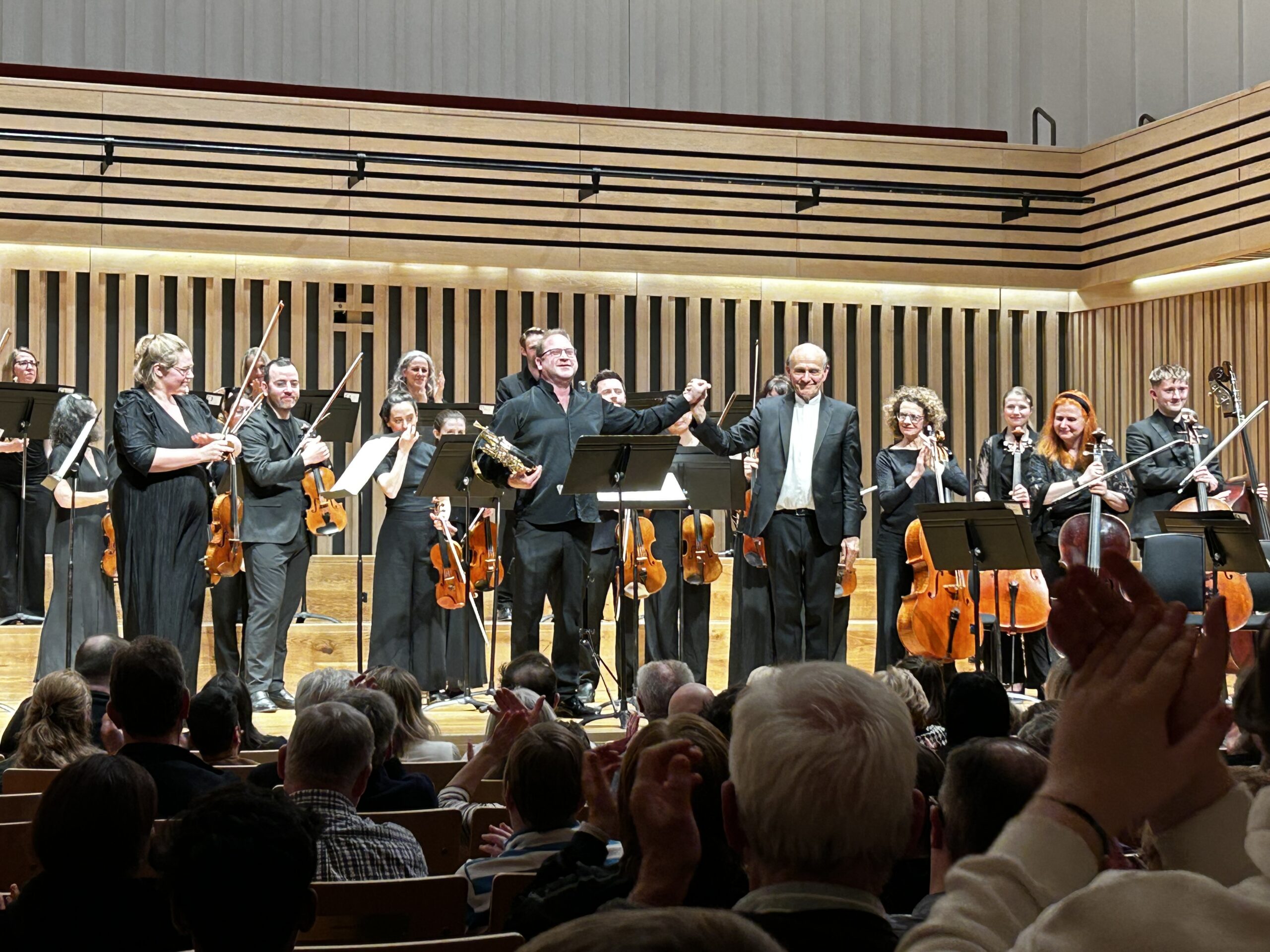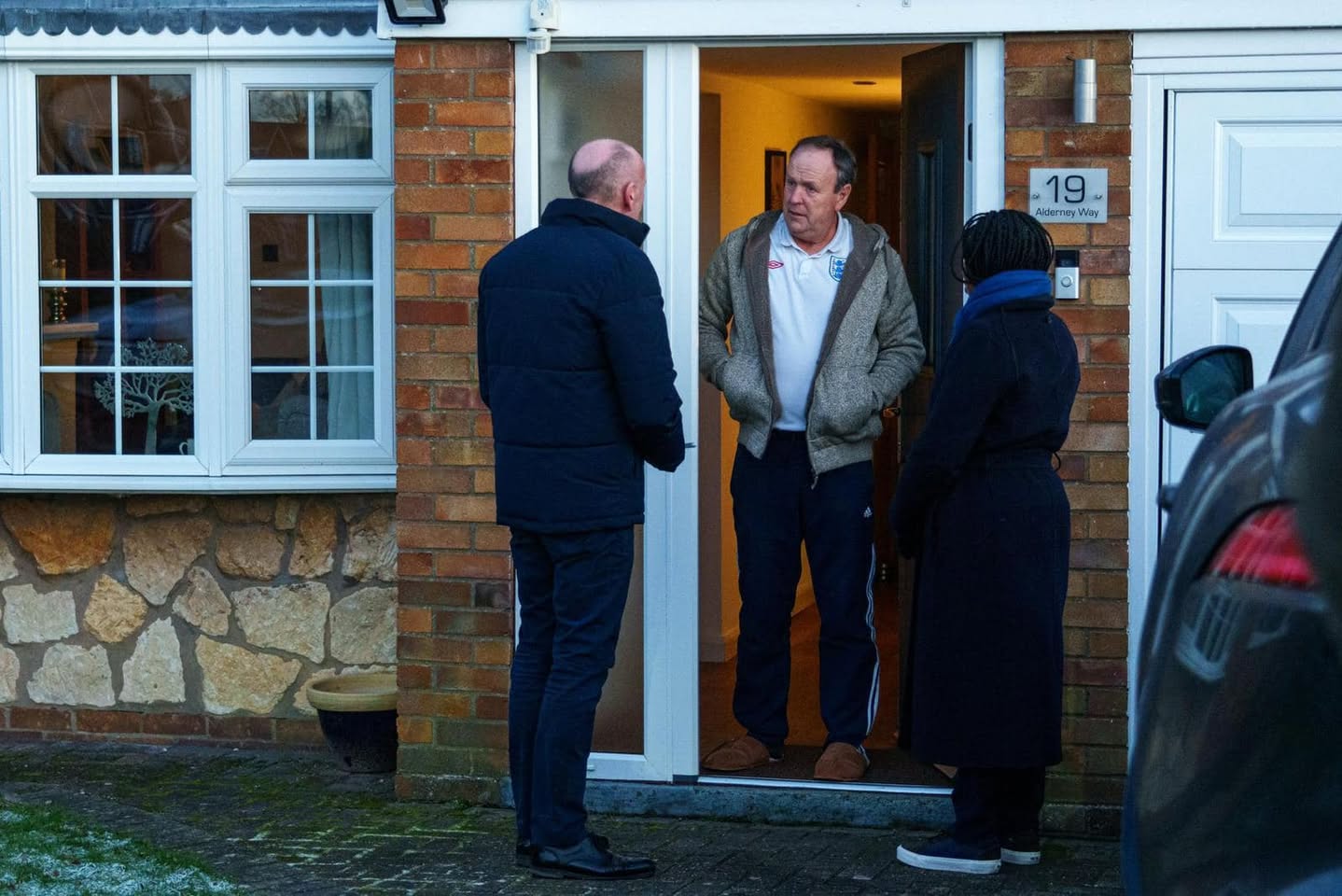Mozart’s cheesemonger muse, Haydn’s punchline, and Marianna Martinez’s revelation: Manchester Camerata made precision and energy in a magical demonstration of industrious teamwork
After a critically-acclaimed series of concerts dedicated to Mozart’s entire Piano Concertos Manchester Camerata embark on a new mini-series of concerts dedicated to the composer’s output for horn. The eboulliant Martin Owen brings his solid craft and dynamic musicianship to the stage with conductor Gábor Takács-Nagy in a spirited and playful collaboration.
Horn Concertos numbers one and two are short in length and light in feel, but this isn’t at the expense of the detail exploited fully by members of the Manchester Camerata. In rehearsal there’s an air of spirited team work between all on stage — hierarchies feel like an anachronism. Takács-Nagy’s gestures have a whiff of the magician about them making discerning the beat seem like an impossibility. Yet when its crucial his input is specific, leaving the mechanics to the experts he’s sharing a stage with.
Come the concert, the precision is ramped up. Precision achieved through solid connection between leader Amarins Wierdsma, oboist Rachael Clegg, and conductor something akin to a feat of Olympic proportions. Who knew the placing of a chord so precisely by so many and with so surreptitious direction could have such devastating impact.
Martin Owen is an evidently accomplished player who wears his craft as lightly as he does his pleasingly casual presence on stage. The right amount of self-deprecation disarms us before the spectacle of his rendition of Mozart’s fiendish writing. Owen makes light work of endless flourishes clearly written to antagonise, irritate or maybe simply test. We end up siding with the soloist in the match against the composer. The soloist wins. That Mozart’s original muse Joseph Leutgeb also had a side business as a cheesemonger makes the challenge in the score all the more eye-popping. Owen responds with throw-away phrases that are tightly controlled but gracefully phrased — tiny musical fireworks that tickle the nerves every time they come around.
In the second movement of the second horn concerto there is more evidence of the magical team work between principal oboe, first violin and Gabor. Warm strings ebb and flow, giving a rich feeling of heart that challenges any notion that Mozart is simply twee.
Whilst Owen’s horn concerto performances kept the pace up, it was the inclusion of one unfamiliar piece of music by one of Mozart’s contemporaries, Marianna Martinez’s Sinfonia in C, that was the real revelation, the performance of which should surely guarantee its inclusion in any chamber orchestra programme of the same ilk. Similar in execution, Haydn’s 94 — the ‘Surprise’ — was boisterous and powerful. A surprise not only because of the musical elements in it, but also how visceral a Haydn sound could be, and how much more invigorating it is too because of it too.
The acoustic at Stoller Hall is live and bright, giving the sound the 38 musicians on stage create a deceptive depth and warmth, and the audience applause that crispness often experienced when a build up of wax has been removed from the ears. This acoustic experience means that the dynamic contrast Takács-Nagy coaxes and the ensemble delivers is striking. That such a small group can achieve this so immediately and consistently throughout a fast-moving programme packed full of notes is a testament to the chemistry (and the stamina) on stage. A marvel to observe and to be in amongst.

This kind of chemistry doesn’t happen by accident. My hunch is that there’s a connection between the electricity on stage and that observed backstage. This is the Manchester Camerata.
Tired, drained and frayed as I was when I visited, it was immediately obvious to me how back-office staff went to great lengths to not only make me feel welcome, but to demonstrate their commitment to the product. In doing so they manifest the mindset present on stage. This unconditional welcome, evident later when the doors opened at 6.30pm, only underlines the point.
These consistent behaviours so readily appreciated by those of us with a notebook emanate from a style of leadership that is echoed in all aspects of the Camerata’s presence. Every aspect of the organisation is then aligned to its purpose.
All of this is reflected in its programming and specifically the printed programme too — bold, self-confident, and uncomplicated: an A4 piece of paper folded twice with a list of works and performers. Any context required for the music has to be shared from the stage, an act which builds connection with the audience before the concert begins, reinforcing the personality of the orchestra we’ve all bought into. Joined up thinking? This work needs to be templated.


